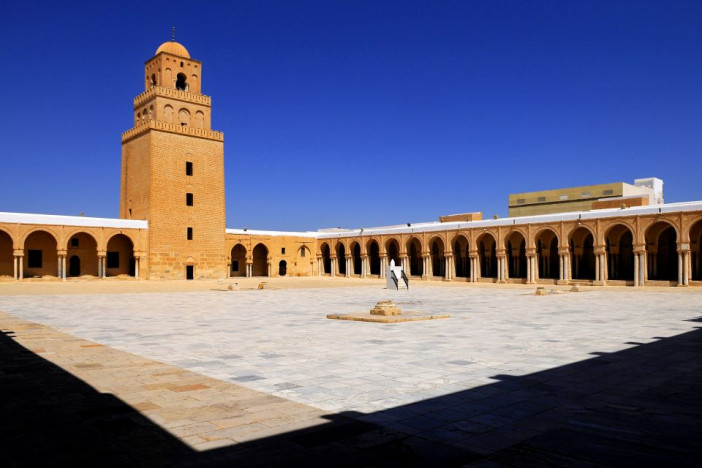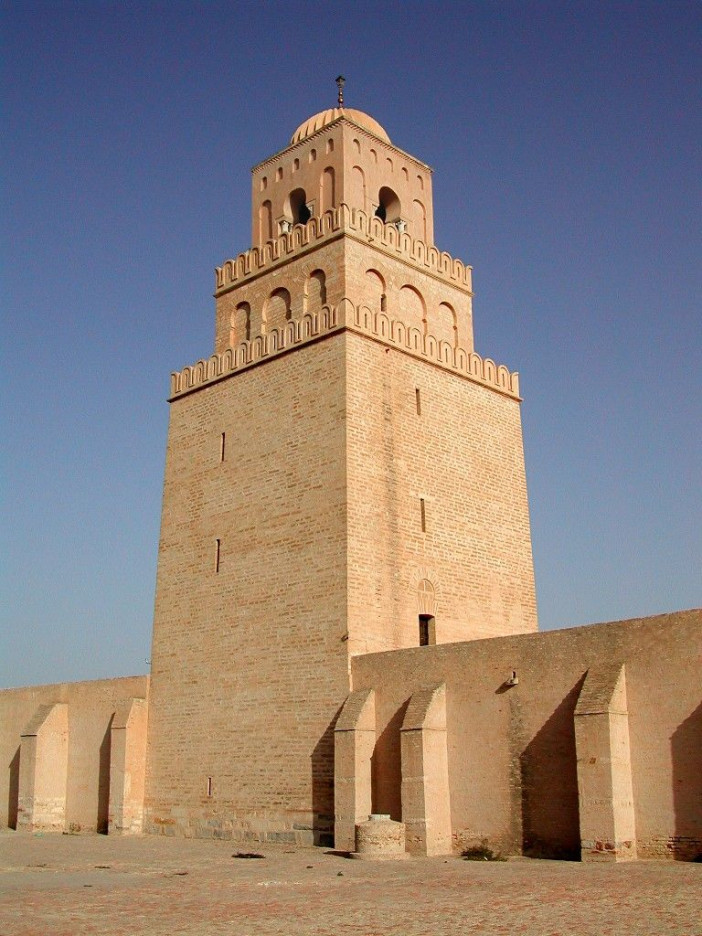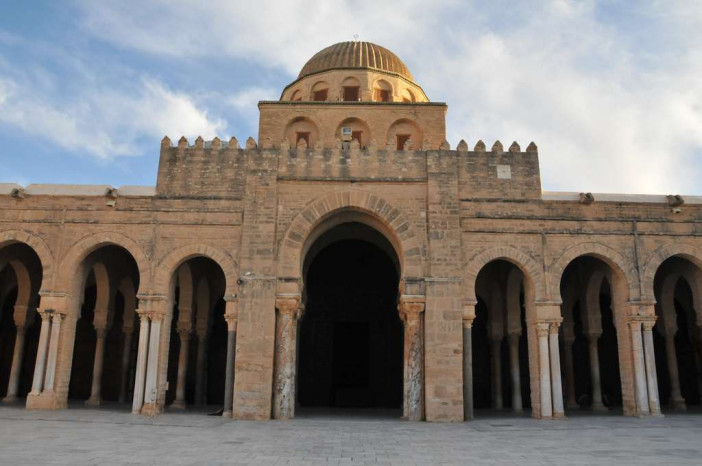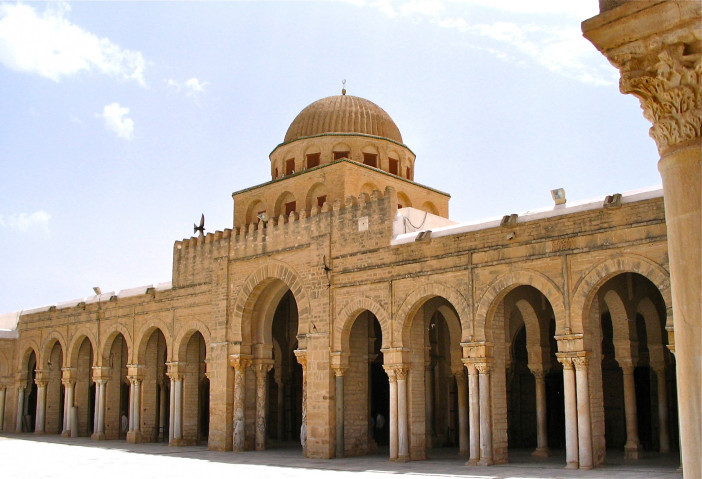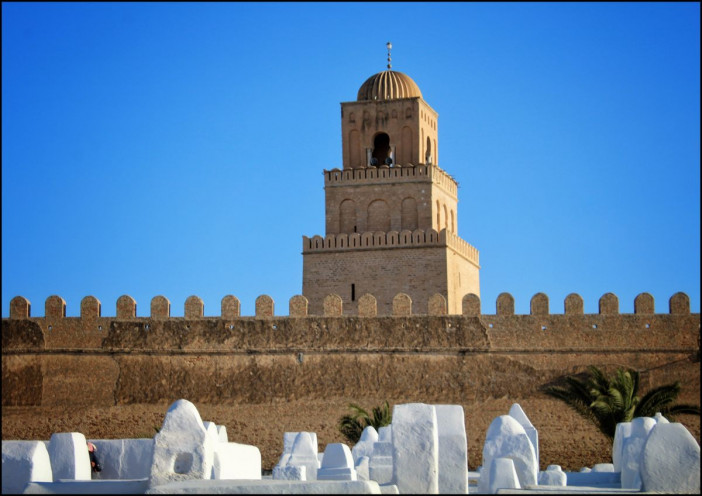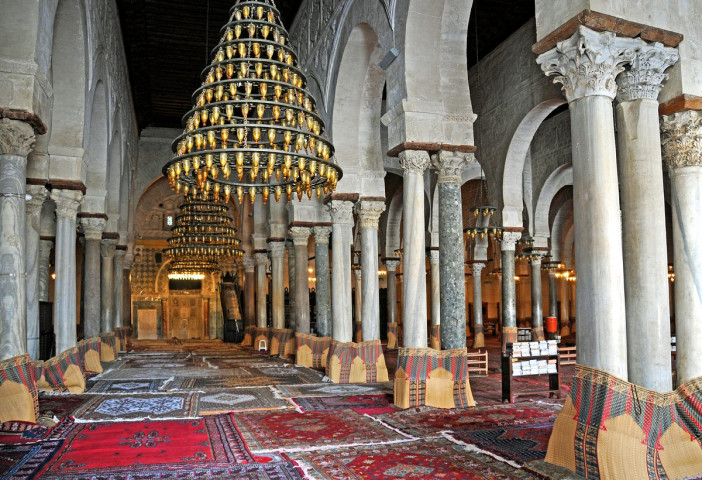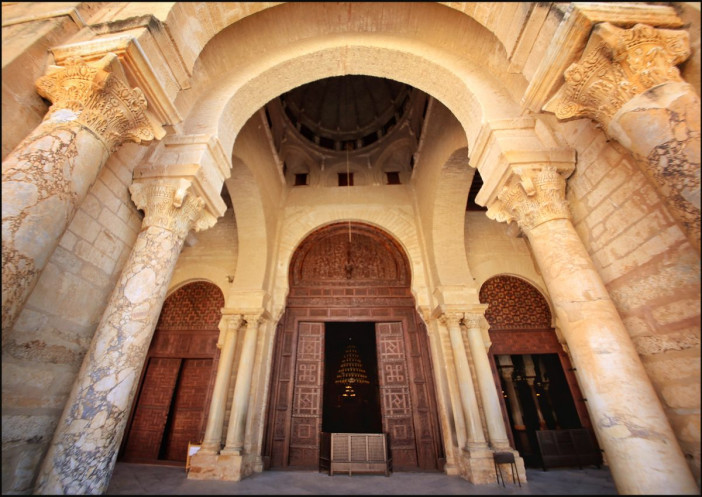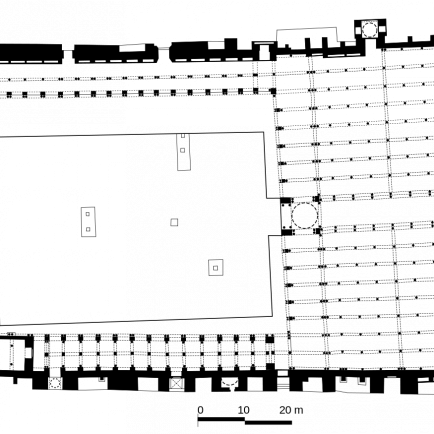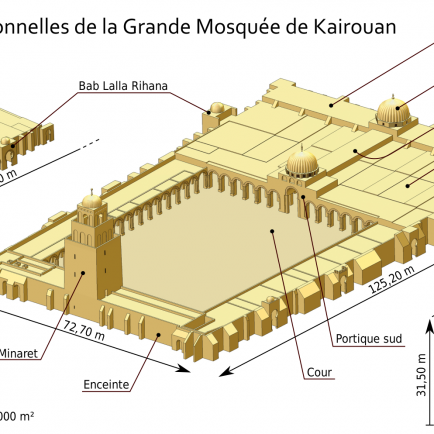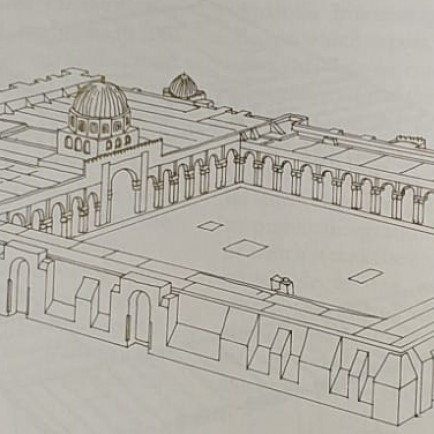Great Mosque of Kairouan
History
The Great Mosque at Kairouan take over the site of the first Muslim oratory in the Maghreb, which was built by 'Okba ibn Nafaa' in 670. After renovations conducted by Hasan ibn Nu'man in 703, enlargements under the governor Bichr ibn Safwan, and another renovation under Yazid ibn Hatim in 772, the mosque was totally rebuilt by the Aghlabid prince Ziyadat Allah I in 836, when it assumed its current dimensions .
Urban and Architectural
The city of Kairouan in Tunisia has long been the oldest and most sacred city in Maghreb, an important meeting place for Arab and Islamic civilizations. The Grand Mosque, also known as the Okba Mosque, is the center of the city's heritage. Located at the intersection of 15 different roads between the mountains and the sea in the center of the country, it is considered the fourth holy place in Islam after Mecca, Medina and Jerusalem. The
structure is part of a vast complex and the mosque itself covers 9000 square meters.
Description
Built on a rectangular plane 125 m long and 75 m wide, the building consists of a courtyard and a 137 m x 37 m portico entrance, divided into 17 straits and 8 bays. The encounter between the central strait and the bay along the wall of Qibla forms a square area in front of the mihrab. Above this square is a grooved dome attached to a carved stone crevice. These are decorated with shell and polyfoil rosette motifs inspired by the Umayyad repertoire. Numerous pillars and ancient capitals in the gallery surrounding the chapel and courtyard form the largest collection of Islamic monuments and museums in the Roman and Byzantine capitals. Despite the continuous restoration of the 8th and 9th centuries (14th and 15th AD), some beautiful beams remain on the wooden roof of the chapel. Dating to 3 AH / 9th century AD, it is decorated in a Greek style with spear-shaped fruits wrapped in symmetrical palm leaves.
References
https://www.atlasobscura.com/places/great-mosque-of-kairouan
https://islamicart.museumwnf.org/database_item.php?id=monument;ISL;tn;Mon01;2;en
Details
Location
6 Av. Oqba Ibn Nafaâ, In the Medina Kairouan, Tunisie
Worshippers
4000
Owners
OKba ibn Nafa'
Year of Build
670
Area
9300
Drawings
Map
History
The Great Mosque at Kairouan take over the site of the first Muslim oratory in the Maghreb, which was built by 'Okba ibn Nafaa' in 670. After renovations conducted by Hasan ibn Nu'man in 703, enlargements under the governor Bichr ibn Safwan, and another renovation under Yazid ibn Hatim in 772, the mosque was totally rebuilt by the Aghlabid prince Ziyadat Allah I in 836, when it assumed its current dimensions .
Urban and Architectural
The city of Kairouan in Tunisia has long been the oldest and most sacred city in Maghreb, an important meeting place for Arab and Islamic civilizations. The Grand Mosque, also known as the Okba Mosque, is the center of the city's heritage. Located at the intersection of 15 different roads between the mountains and the sea in the center of the country, it is considered the fourth holy place in Islam after Mecca, Medina and Jerusalem. The
structure is part of a vast complex and the mosque itself covers 9000 square meters.
Description
Built on a rectangular plane 125 m long and 75 m wide, the building consists of a courtyard and a 137 m x 37 m portico entrance, divided into 17 straits and 8 bays. The encounter between the central strait and the bay along the wall of Qibla forms a square area in front of the mihrab. Above this square is a grooved dome attached to a carved stone crevice. These are decorated with shell and polyfoil rosette motifs inspired by the Umayyad repertoire. Numerous pillars and ancient capitals in the gallery surrounding the chapel and courtyard form the largest collection of Islamic monuments and museums in the Roman and Byzantine capitals. Despite the continuous restoration of the 8th and 9th centuries (14th and 15th AD), some beautiful beams remain on the wooden roof of the chapel. Dating to 3 AH / 9th century AD, it is decorated in a Greek style with spear-shaped fruits wrapped in symmetrical palm leaves.


